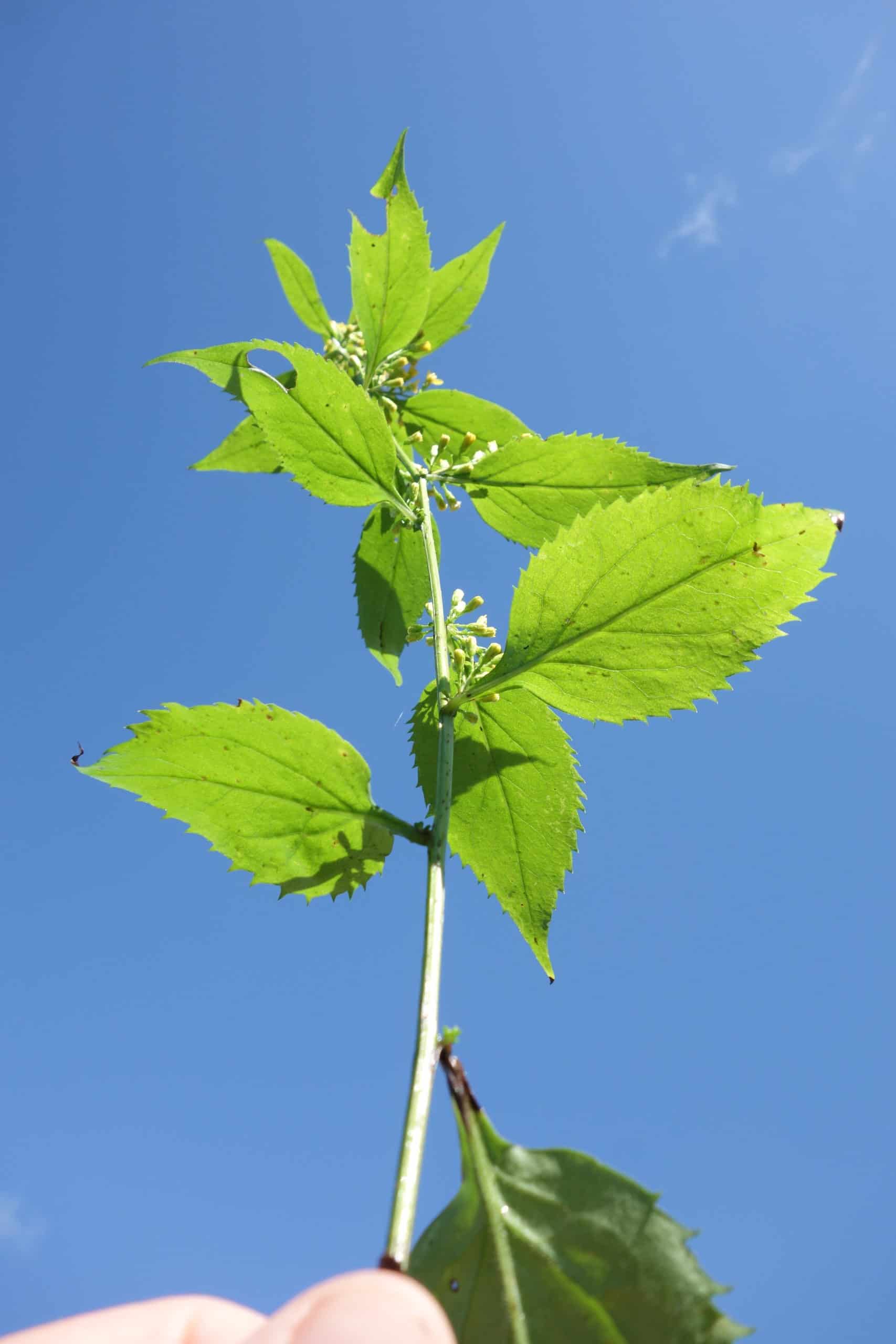
Blue Sky Botany – Goldenrods
The baffling goldenrods swim in that giant taxonomic pool of asters, sunflowers, and thistles (Asteraceae). Their tiny, sun-emitting yellow-orange flowers are aggregated into marvelous “inflorescences” that appear to the uninitiated as single large blooms, whose growth forms are variously described as feather dusters, candles, or flattops. They are beloved by late summer insects, especially bees, and people with bee binoculars. Identification practice makes perfect.
There are too many for one article; I present a few that I have photos for.
(Photos and article by Rob Baller)
Early goldenrod (Solidago juncea)
Mid-August. Knee high on a tall person. Forming colonies whose flowering stalks are spaced closely enough to touch each other. Inflorescence a wide-open feather duster, spreading all directions, often slightly leaning and asymmetric. Stems and leaves totally smooth. Leaves tending to be similar size on the stem, but in fact reducing upwards. Mesic to dry prairie.
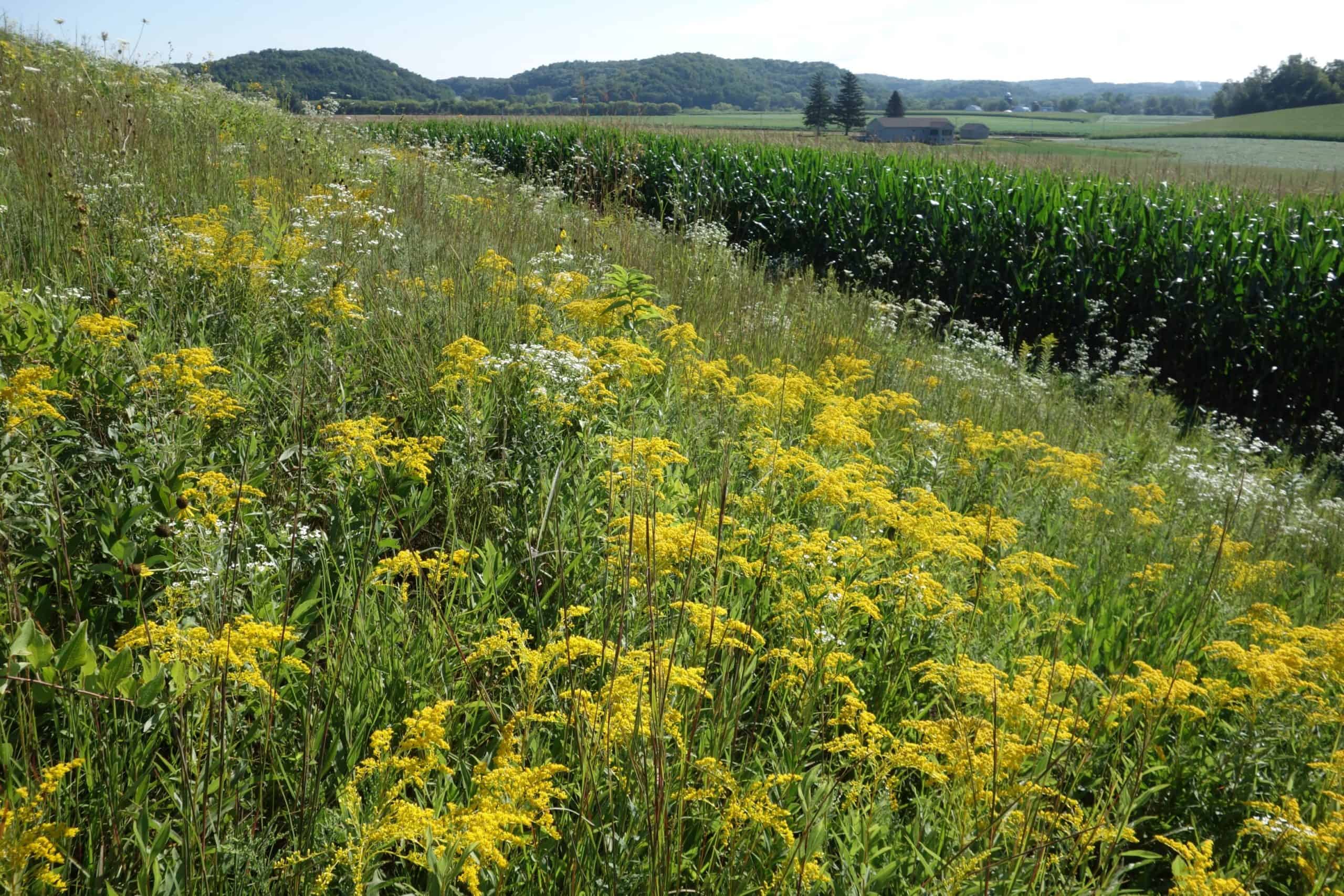 (Photo: Early goldenrod (Solidago juncea)
(Photo: Early goldenrod (Solidago juncea)
Missouri goldenrod (Solidago missouriensis)
Late August. Knee high. Forming colonies, whose blooming stalks are scattered too widely to touch each other, with many non-flowering stalks in between, giving the impression it’s just not a good year for blooming. Inflorescence a feather duster, typically but not guaranteed narrower than S. juncea. Stems and leaves totally smooth. Leaves largest at the base, clearly reducing upwards. Dry prairie, often sand.
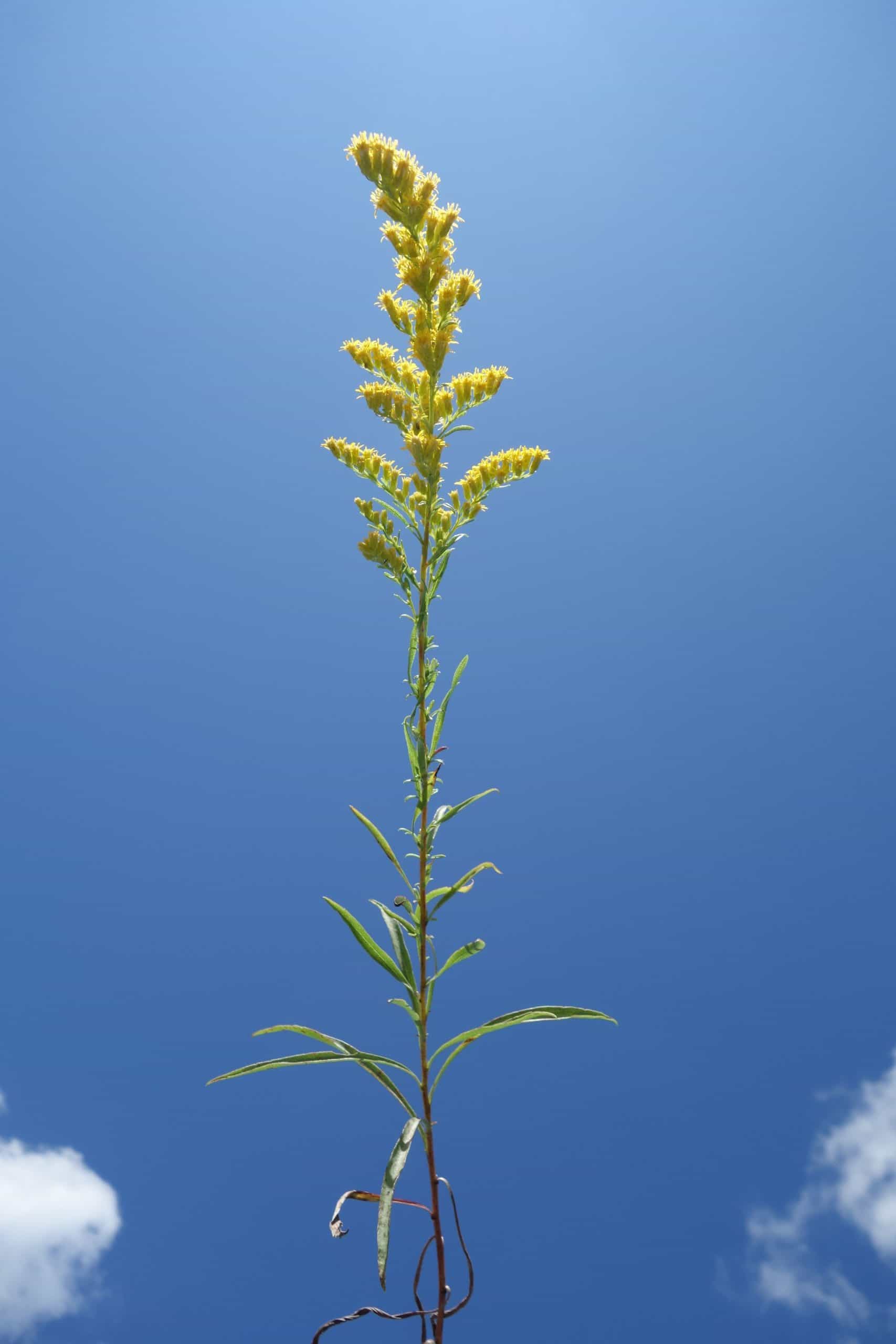 (Photo: Missouri goldenrod (Solidago missouriensis))
(Photo: Missouri goldenrod (Solidago missouriensis))
Elm-leaved goldenrod (Solidago ulmifolia)
Late August. Waist-high. Inflorescence like a fireworks display, shooting slender wands of gold in several directions, often from upper leaf axils, the flowers born on the upper rim of the curve. Lower leaves broad and toothed like elm leaves. Mesic to dry, prefers light shade, oak savanna.
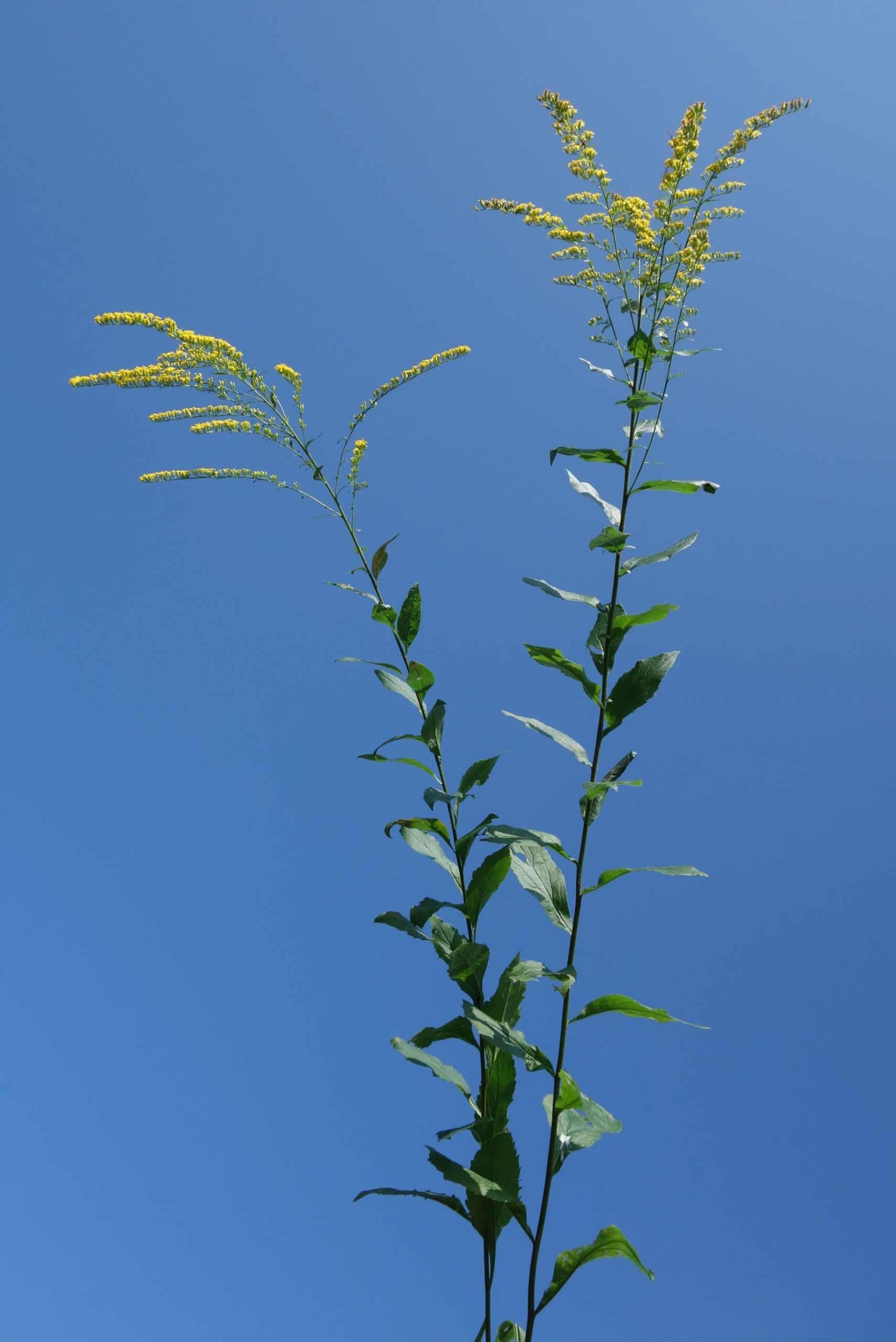 (Photo: Elm-leaved goldenrod (Solidago ulmifolia))
(Photo: Elm-leaved goldenrod (Solidago ulmifolia))
Canada goldenrod (Solidago canadensis)
Late August. Waist high or more. Forming colonies, sometimes covering fields. Inflorescence a flower duster whose overall outline is an asymmetric pyramid, leaning or arching to one side. Stems and leaves finely hairy, mostly toward the top of the plant. Mesic open sunny fields, prairie. Widespread volunteer; never planted on purpose.
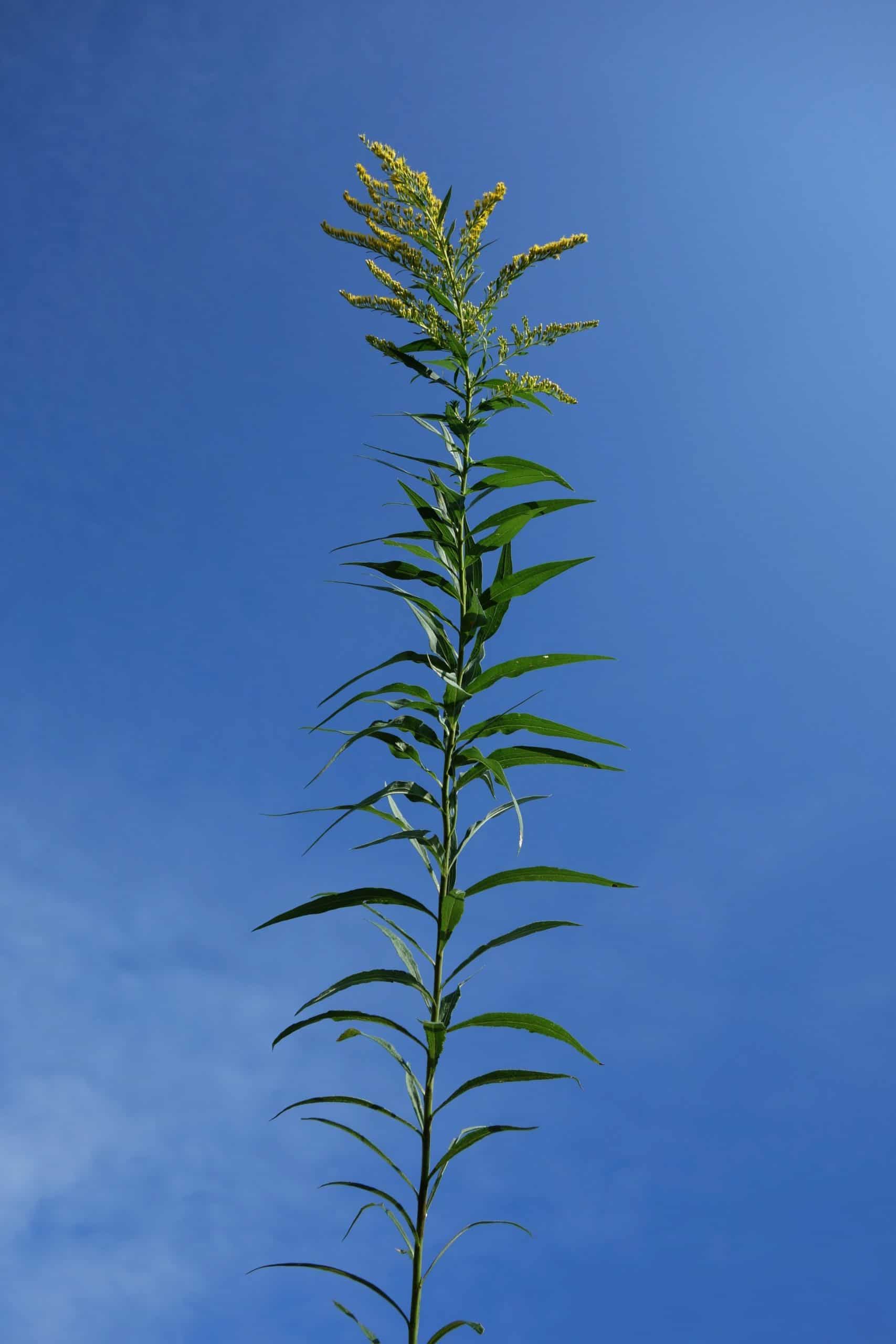
(Photo: Canada goldenrod (Solidago canadensis))
Zigzag goldenrod (Solidago flexicaulis)
Late August. Waist high. Inflorescence presented in elegant marble-sized globs emerging from the upper-stem leaf axils, giving the stem and blooms a subtle zigzag appearance, which I find difficult to perceive. Lower leaves oval, toothed, with petioles tapering or ‘winged’ to the stalk. Mesic to dry, shady places, oak savanna.
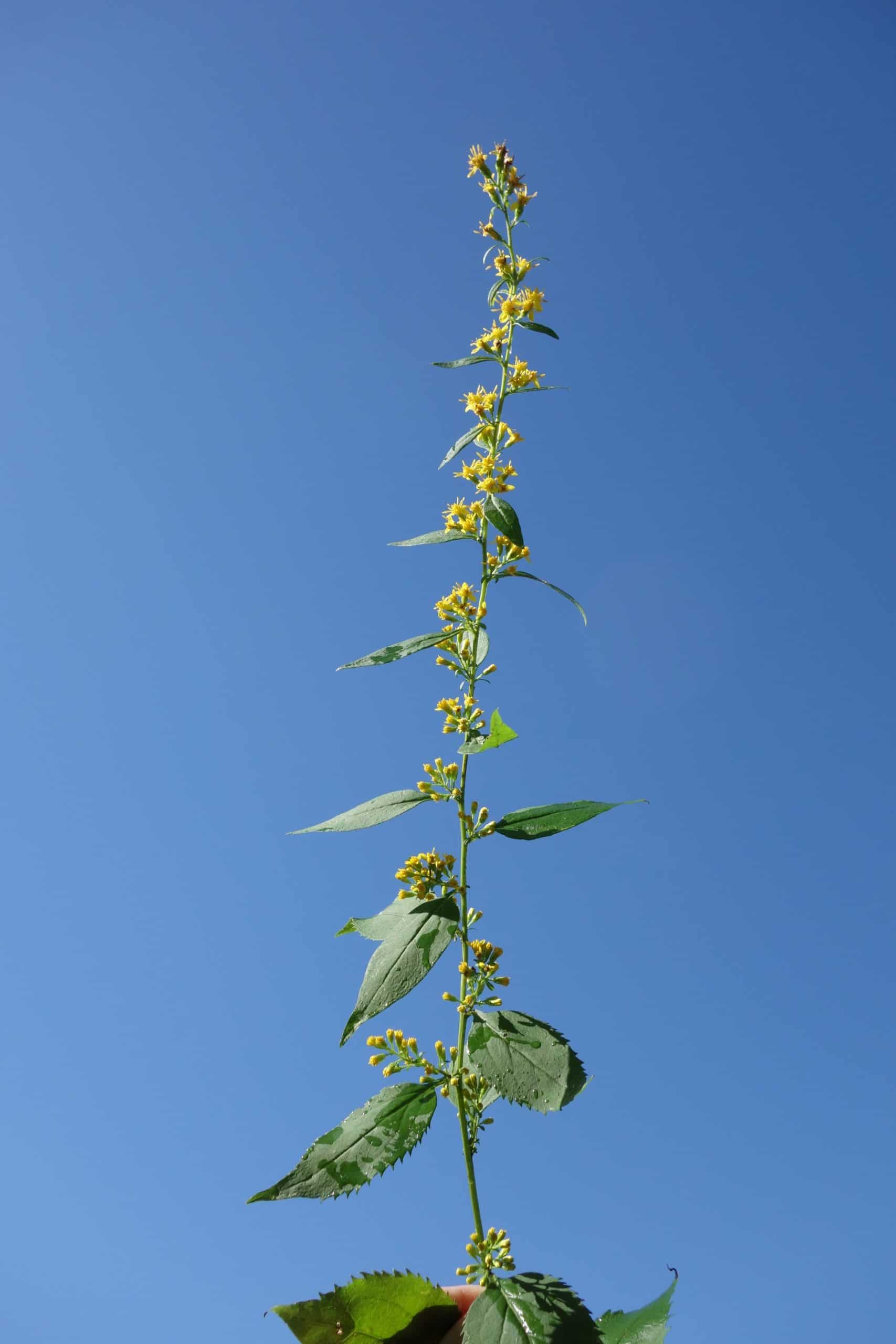

(Photo: Zigzag goldenrod (Solidago flexicaulis))
